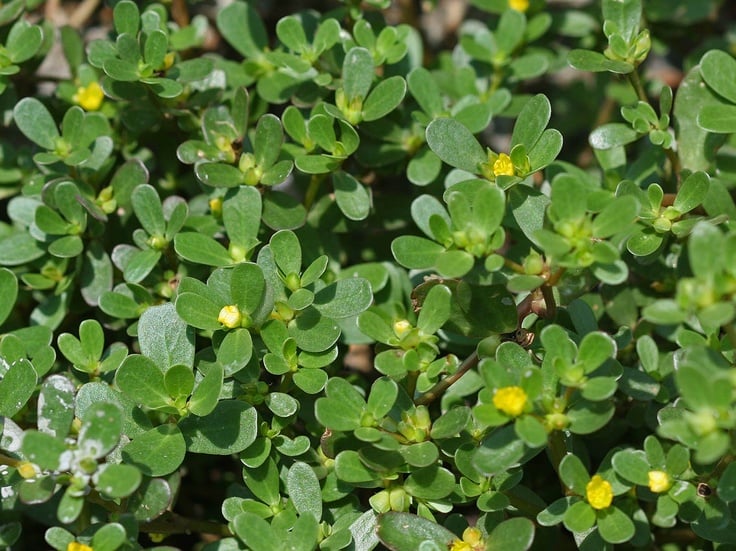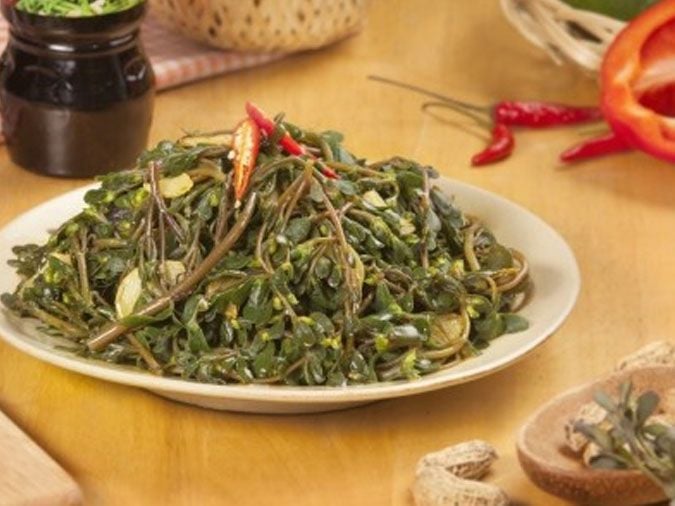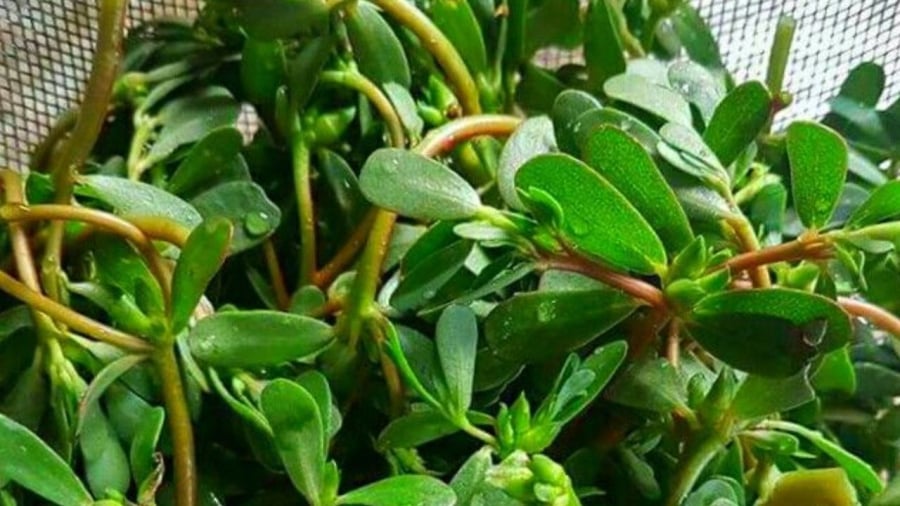Portulaca oleracea, or purslane, is a resilient plant often found growing wild in moist, sunny areas such as rice paddy banks, wastelands, or damp walls. Once considered a mere weed or fodder for pigs and fish, purslane has emerged as a sought-after delicacy. Beyond its refreshing tangy flavor, purslane surprises with its exceptional nutritional value and remarkable medicinal properties. Let’s explore why this humble vegetable is gaining attention from both homemakers and nutrition experts alike.
1. What is Purslane?
Purslane (Portulaca oleracea) is a creeping plant with a reddish stem that thrives in wild, moist, and sunny environments. Its small, succulent leaves and tiny yellow flowers are distinctive features. Purslane is easy to cultivate and requires minimal care, which is why it was once regarded as a “poor man’s vegetable,” only consumed during food scarcity.
However, modern research reveals that purslane boasts an impressive nutritional profile, even surpassing many commonly cultivated vegetables in terms of nutrient content.

2. Purslane’s Outstanding Nutritional Profile
According to leading nutritionists, purslane is one of the few vegetables that naturally contain omega-3 fatty acids, a rare find among green leafy vegetables. Additionally, purslane is packed with vitamins A, C, E, and B-complex, as well as antioxidants such as flavonoids and betalains.
It is also a good source of minerals like magnesium, potassium, iron, and calcium. The presence of mucilage and soluble fiber supports healthy digestion. Purslane’s exceptional nutritional value and safety profile have earned recognition from both traditional and modern medical practitioners for its therapeutic benefits.

3. The Amazing Health Benefits of Purslane
Cooling and Detoxifying: With its cooling nature and mild sour taste, purslane helps clear heat and inflammation, making it ideal for summer consumption to detoxify the body and alleviate skin issues like acne.
Gut Health: In traditional medicine, purslane is valued for its antibacterial and anti-inflammatory properties, making it useful for treating diarrhea, dysentery, and intestinal infections. The mucilage in purslane also protects the gut lining and improves digestive motility.
Cardiovascular Support: Modern studies suggest that purslane helps dilate blood vessels, reduce blood lipids, and may contribute to the prevention of atherosclerosis and hypertension. This makes purslane an excellent choice for the elderly and those at risk of cardiovascular disease.
Immune Boosting and Antioxidant Properties: The antioxidants in purslane slow down aging, protect cells from free radical damage, and naturally enhance the body’s defense mechanism.
Skin Benefits: By cooling the liver and detoxifying the body, purslane is believed to reduce acne and promote clearer, more even-toned skin. Fresh purslane is sometimes crushed and applied topically or used as a wash for itchy, allergic skin conditions.

4. Purslane Delicacies: A Taste of Rustic Charm
Purslane’s appeal extends beyond its health benefits to its culinary versatility. Its crisp texture, tangy flavor, and ease of preparation have made it a favorite ingredient in many dishes. Here are some mouthwatering purslane recipes to try:
- Purslane and Shrimp Soup: A refreshing summer dish with a subtle natural tang.
- Blanched Purslane with Spicy Garlic Dip: A simple yet flavorful dish that evokes the essence of home.
- Sweet and Sour Purslane Salad: A delightful fusion of flavors that tantalizes the taste buds.
- Stir-fried Purslane with Beef or Eggs: A nutritious way to enhance protein intake.
- Pickled Purslane: A traditional side dish that aids digestion and enhances meals.
Today, rustic cuisine restaurants feature purslane as a specialty, honoring its humble origins while catering to modern health-conscious diners.
5. Precautions When Consuming Purslane
- Individuals with a cold constitution or a tendency for diarrhea should refrain from excessive consumption.
- Pregnant women should consult their doctors as purslane may induce uterine contractions.
- Thoroughly wash purslane before cooking, especially when sourced from the wild, to avoid parasites and soil contaminants.
Purslane’s journey from a roadside weed to a prized vegetable underscores the value inherent in simplicity. Its nutritional and medicinal attributes have elevated its status, proving that sometimes, the most modest offerings can yield the most enduring benefits. If you’re seeking a vegetable that delights both the palate and nourishes the body, purslane is undoubtedly a worthy choice.






























